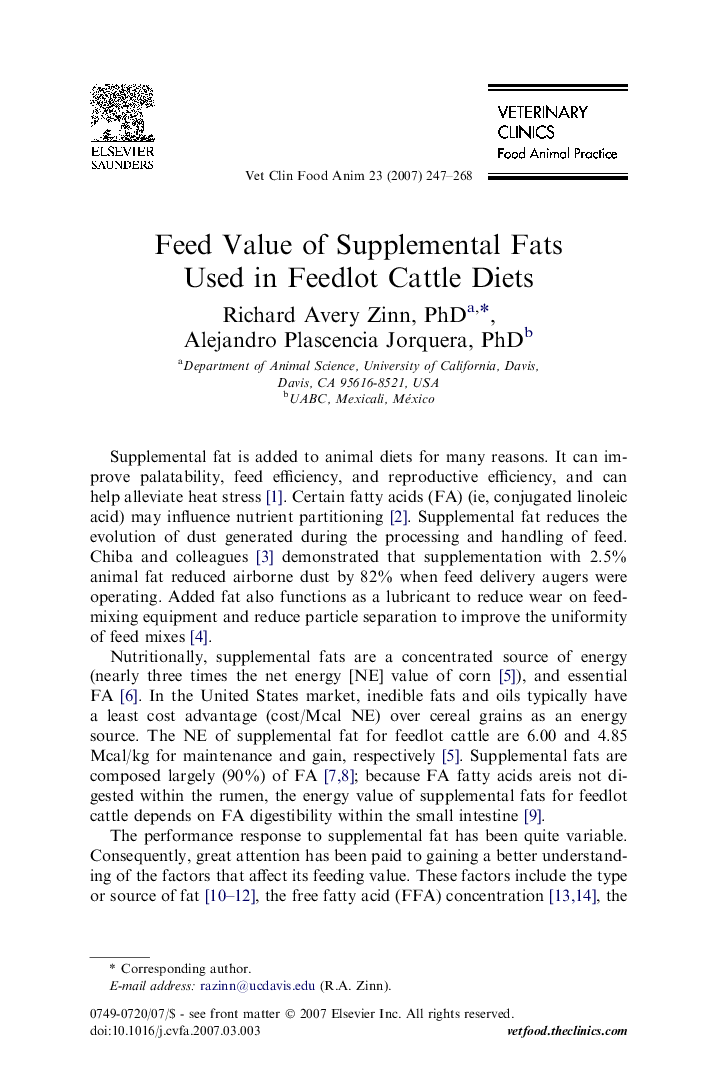| Article ID | Journal | Published Year | Pages | File Type |
|---|---|---|---|---|
| 2459947 | Veterinary Clinics of North America: Food Animal Practice | 2007 | 22 Pages |
Abstract
The inclusion of supplemental fats in growing-finishing diets for feedlot cattle also improves diet “condition.” Quality factors that may influence the feeding value of fat include the source of fat; moisture, impurities, and unsaponifiables; free fatty acid concentration; degree of saturation or titer; and rancidity (peroxide value). The net energy value of fat declines linearly with an increasing level of supplementation because of constraints on postruminal fatty acid digestion. The authors recommend that receiving diets not contain more than 2% supplemental fat. Little evidence suggests that the feeding value of fat is different for Holsteins than for conventional beef breeds. Fat supplementation is not consistent in its effect on intramuscular fat distribution (marbling), longissimus (rib eye) area, and fat thickness, but can be expected to increase dressing percentage and kidney, pelvic, and heart fat percentage.
Related Topics
Health Sciences
Veterinary Science and Veterinary Medicine
Veterinary Science
Authors
Richard Avery PhD, Alejandro Plascencia PhD,
